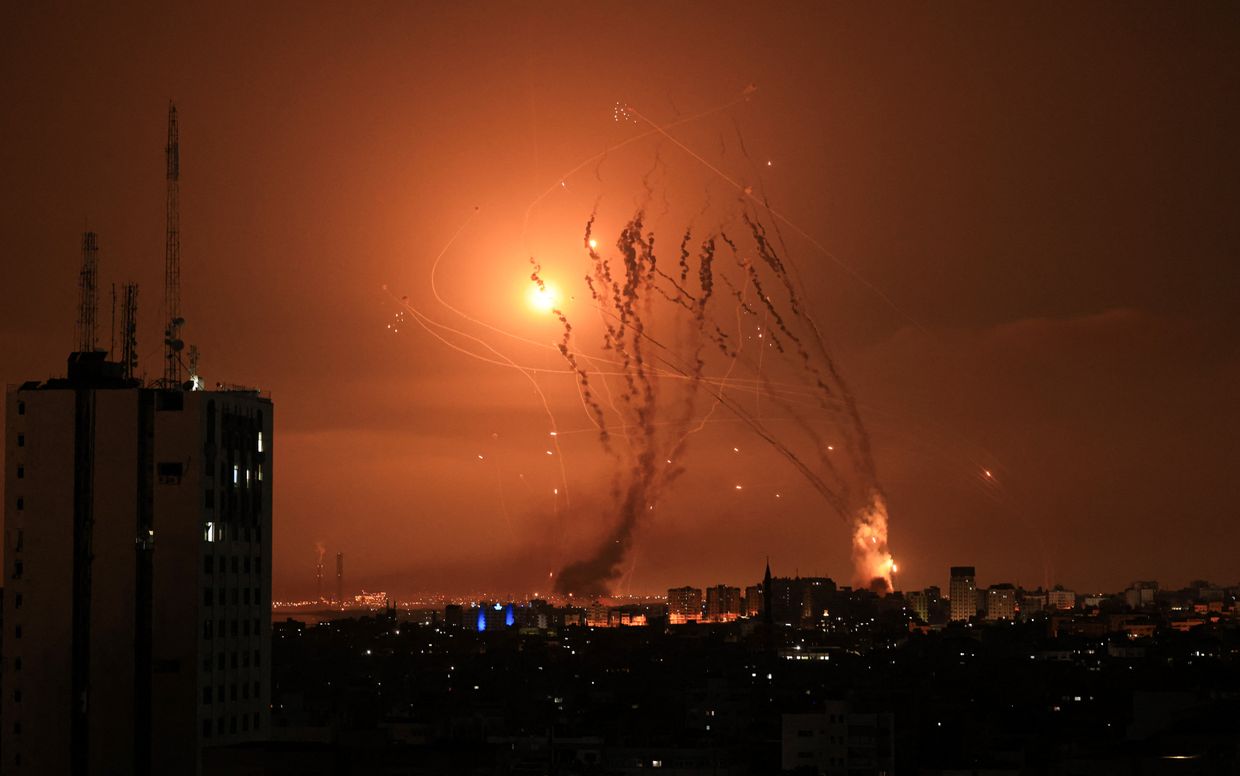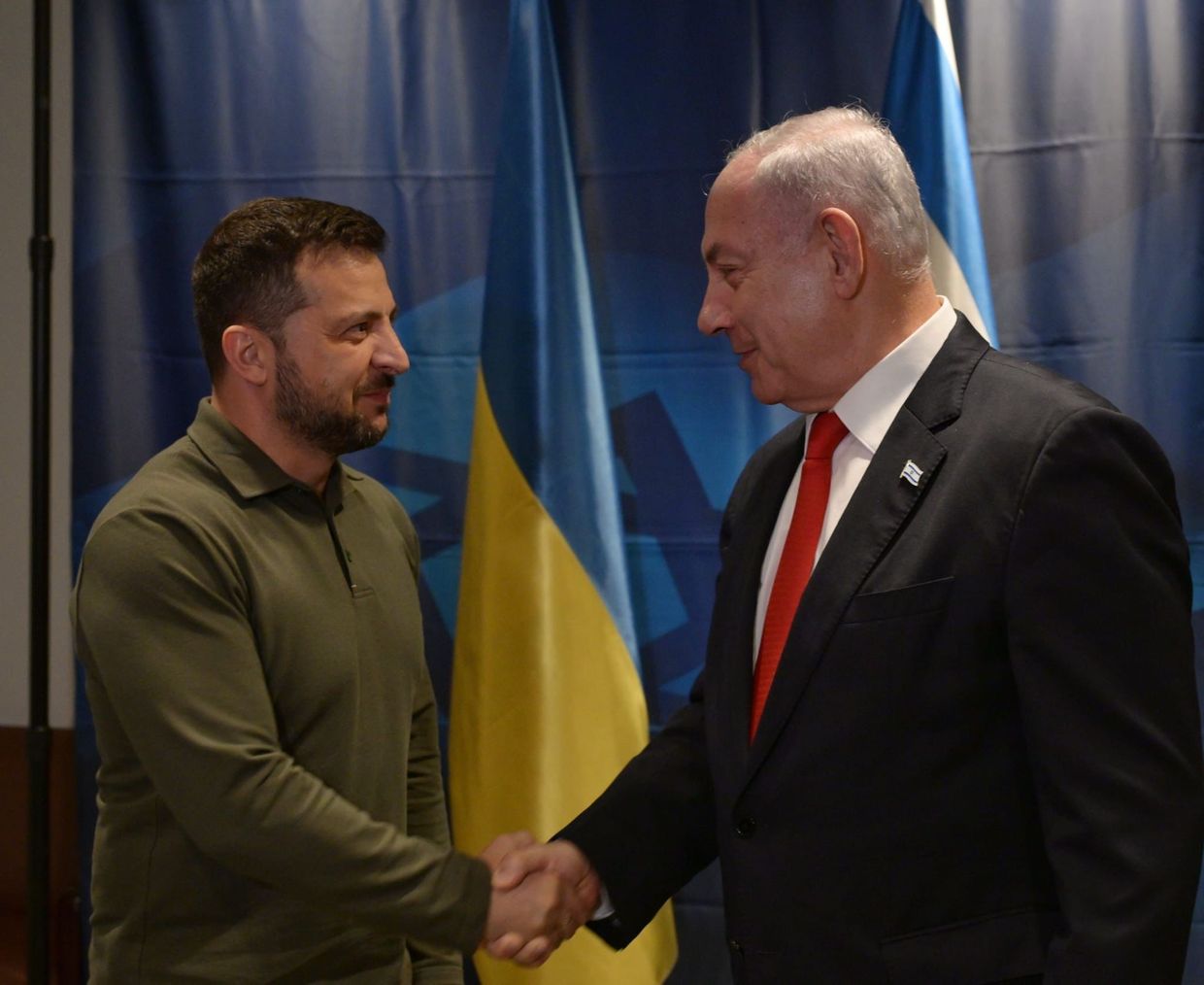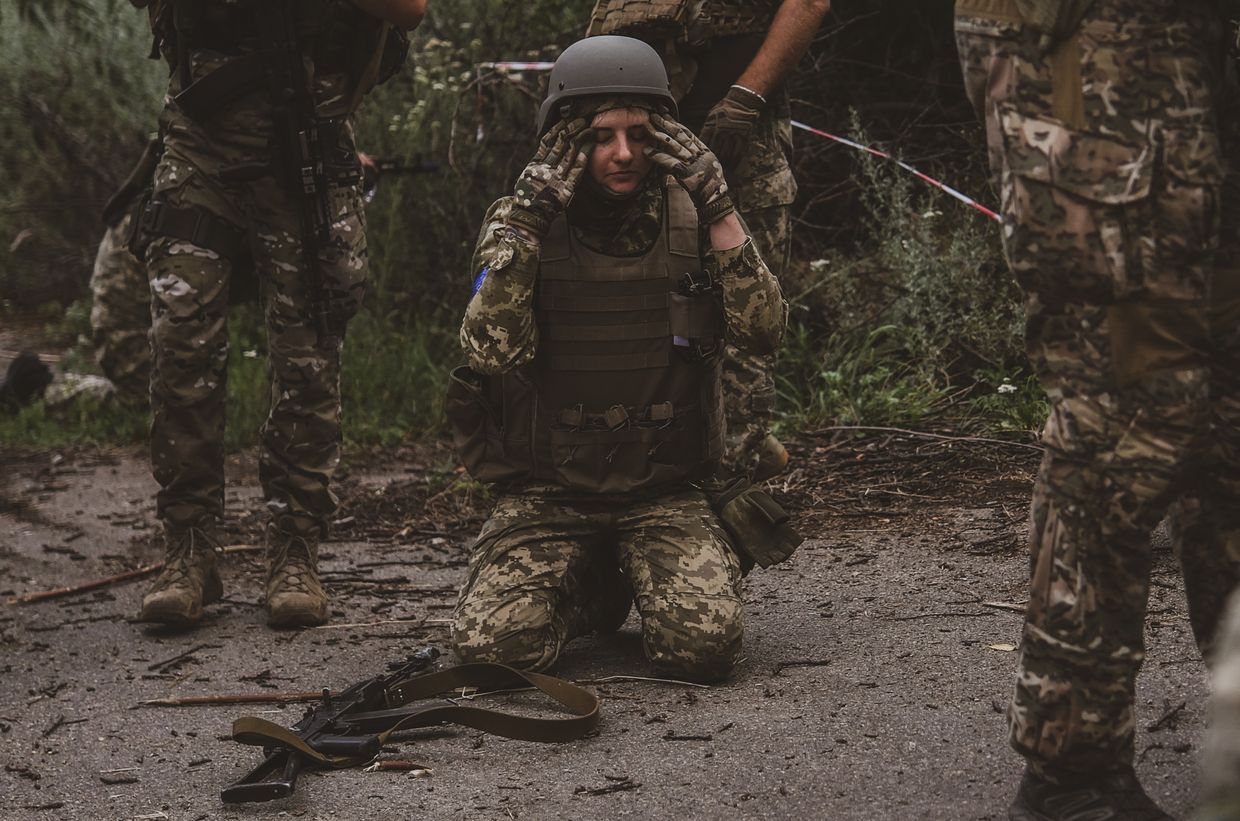Ukrainians trapped in besieged Gaza: 'We are constantly bombed'

Hundreds of Ukrainians have been caught in the crossfire inside the Gaza Strip after Hamas terrorist attacks on Oct. 7 prompted Israel to respond with a total blockade and intense bombardment of the small Palestinian enclave.
Ukraine is now working to evacuate 243 Ukrainian citizens from Gaza, which has plunged into a "humanitarian catastrophe," Ukraine's Human Rights Commissioner Dmytro Lubinets said on national television on Oct. 14.
Yet, as of Oct. 15, hundreds of foreigners and millions of Palestinians have been unable to leave due to sealed borders.
Gaza under siege
Gaza – a Palestinian enclave de-facto ruled by Hamas – has been under a land, air, and sea blockade by Israel and Egypt since 2007 after the extremist group won the local elections and violently forced out its opposition from the area.
Under the blockade, the freedom of movement was severely restricted and, at times, impossible due to border closures, while only a limited number of humanitarian goods like food, water, gas, and fuel were allowed inside.
Following Hamas' terrorist attacks on Oct. 7, in which at least 1,300 people were murdered and 126 were taken hostage, Israel introduced an even harsher blockade, cutting off the supply of electricity, food, and water, among other goods.
Since then, Gaza has been under siege, which the Israeli Minister of Energy and Infrastructure said would only be lifted after Hamas frees all hostages.
On Oct. 15, Israel reportedly resumed the flow of water, but only to the southern half of Gaza.
As Israel prepares for a ground invasion into Gaza to eliminate Hamas, Israel Defense Forces (IDF) called on Palestinian civilians to evacuate from Gaza's north, where ground operations are expected to begin within days.
Some criticized the move, saying that it's practically impossible to move up to a million people on such short notice.
The director of the Al-Shifa hospital in Gaza City, located in the enclave's north, said it was impossible to follow the IDF's order since the hospital was receiving hundreds of wounded every hour, and the operating rooms were working non-stop.
At the same time, the IDF has been launching hundreds of airstrikes all throughout Gaza, reportedly eliminating several Hamas commanders involved in the terrorist attacks on Oct. 7.

Gaza is one of the world's most populated areas, which Hamas terrorists exploit when they deliberately hide in civilian areas.
The air attacks, from a country seeking revenge, have allegedly killed at least 2,670 Palestinians, hundreds of them children, and injured nearly 10,000, according to Gaza's Health Ministry, which doesn't differentiate between fighters and civilians in its reporting of casualties.
Ukrainians in Gaza
"We are constantly bombed. It's really scary," Maryna Alastal, a Ukrainian-Palestinian living in Gaza with her Palestinian husband and their eight-month-old son, told the Kyiv Independent.
"There is basically no internet, no electricity. I can't even call any of my friends here in Gaza," Alastal said.
She briefly spoke with the Kyiv Independent using their family generator for sporadic internet connection. Her family was able to evacuate to the south of the enclave.
Alastal's parents – Ukrainian Oksana and Palestinian Raed – met when both were studying at a medical university in Sumy, a city in northeastern Ukraine. They got married in the 1990s and eventually moved to Gaza, where Raed has been working as a pulmonologist.
Raed has been a Ukrainian citizen since 2002. The family has frequently traveled to Ukraine over the years, where Oksana's parents still live.
Maryna Alastal and her direct family – husband, son, parents, and her two younger siblings remain in Gaza under siege.


They are one of many Ukrainian families living in Gaza. In 2021, there were more than 800 Ukrainians, most being women who joined their Palestinian husbands, as well as their children.
"Not everyone can evacuate south," Alastal told the Kyiv Independent, explaining that many people don't have vehicles, money, or places to stay.
"Some people walked up to 40 kilometers on foot, and some stayed home (in the north) just because they had nowhere to go," Alastal said.
There were also reports of the Israeli military allegedly hitting civilian cars on the routes they instructed Palestinians to evacuate through.
On Oct. 13, several cars and an ambulance on Salah-ad-Din road were hit, leaving at least 12 people dead, mostly women and children. The Financial Times, in cooperation with a conflict monitoring group Airwars, and experts, said that available evidence points to an Israeli airstrike.
The IDF said they are investigating the incident while also claiming Hamas was responsible, with the terrorist group infamous for using civilians as human shields and capitalizing on civilian casualties.
Nevertheless, the incident prompted many to fear evacuation.
Alastal's family house, where she lived with her husband and son in Gaza City, was destroyed amid Israeli airstrikes, with their neighborhood – Rimal – turned into rubble. IDF said the area was used by Hamas to establish its hideouts.

Together with her husband and son, Alastal fled to her parents' home in the southern city of Khan Yunis. But the attacks have been relentless there, too.
"What I've seen in the last two days took a huge toll on our mental health," Alastal's father, Raed, told the Kyiv Independent. "A large number of rockets, just 50 meters away from our house… our kids are scared."
Raed works at a local Nasser Hospital, which is one of the largest in Gaza. Since Israel began retaliating for the terrorist attacks, the hospital has been coping with enormous numbers of civilians rushing in for treatment and also simply trying to hide.
"There are tens of thousands of people inside the hospital and nearby, in the corridors, everyone is trying to find whatever little space they can just to rest," Raed said. He also mentioned that the hospital was running out of medicine, and there was enough fuel left in the generators for only a few days.
"The hospital has already turned into a camp," he said.
The family has been in touch with Ukrainian authorities for days and is hoping to evacuate as soon as possible.
Yet the evacuation efforts are taking longer than expected – all ways out of Gaza remain shut.
Evacuation crisis
According to Ukraine's Human Rights Commissioner Dmytro Lubynets, 243 Ukrainians – mostly women and children – need to be evacuated from the Gaza Strip.
"What is happening in Gaza is a humanitarian catastrophe," Lubynets said on Ukraine's TV on Oct. 14.
"There are not just electricity cuts but problems with water, food, medicine… even cellular network, so we are losing connection with our citizens," Lubynets added.
On Oct. 13, Ukraine received official confirmation from the Israeli government that Ukrainians and other foreigners would be allowed to evacuate from the Gaza Strip via the southern Rafah crossing, according to the commissioner.
However, as of Oct. 14, the crossing on the Egyptian border remained closed, trapping civilians inside Gaza, Lubynets said. The New York Times also reported on Oct. 14 that the crossing was closed, citing families trying to evacuate.
Rafah crossing is located in Gaza's southern town of Rafah, which is at the enclave's border with Egypt. Apart from the Erez crossing in the north, which is fully controlled by Israel and remains shut, Rafah is the only way out of Gaza for the 2 million people living there.
The crossing is under the control of Hamas and Egypt, which cooperates very closely with Israel on conditions of entry and other aspects of Rafah's operations.
It hasn't been entirely clear who is responsible for Rafah's closure.
Egypt said its side of the crossing was open for foreigners. US National Security Advisor Jake Sullivan reportedly said it was Hamas that wasn't cooperating, while Lubynets seemed to blame Israel.
"Two hours before the evacuation (on Oct. 14), for unknown reasons, Israel's Foreign Ministry told us they can't guarantee the safety (of evacuees) and revoked their permission," Lubynets said on air, adding that in response, Ukraine's Ambassador to Israel Yevhen Korniychuk sent a note of protest to Israeli authorities.
Israel has also bombed the crossing several times, damaging some of its infrastructure, prompting Egypt to shut Rafah on its side a few days earlier.
Notably, only foreigners have theoretically been allowed to get out of Gaza. Egypt said it won't let through any Palestinians, fearing for its security amid a refugee influx.
This leaves more than 2 million civilians trapped inside the enclave, at least for now.


















